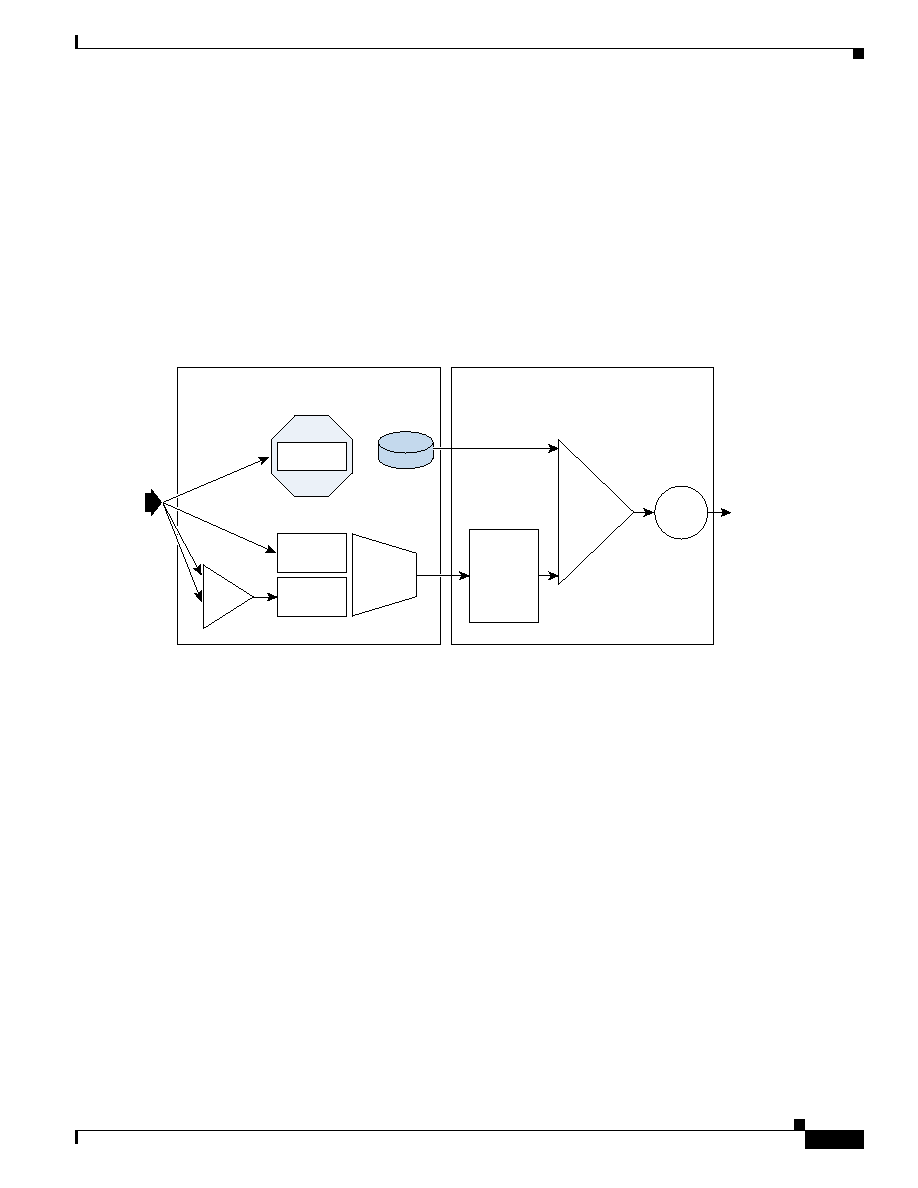
of Priority Queueing, Custom Queueing, and Weighted-Fair Queueing. In fact, LLQ was originally
named PQ-CBWFQ, but this name was dropped in favor of LLQ for fairly-obvious marketing reasons.
interactive-video applications. The strict-priority queue is completely emptied before the CBWFQ
queues are serviced.
(PQ). When traffic is present in the LLQ, it is serviced with preferential treatment exhaustively (first
until none is present). The priority queue is policed so that traffic in the priority queue cannot starve out
the other classes of traffic. It is important to provision the LLQ properly. This policing action could
negatively affect voice quality if the policing value is set lower than the total amount of voice traffic to
be serviced by the LLQ, in which case the excess will be dropped.
own so that a small bandwidth guarantee can be made. This insures that call control traffic is transmitted
even during periods of congestion on the link. This means that the time to dial tone and call
setup/transfer are performed quickly enough to assure a positive user experience.
bandwidth reservable for the LLQ is variable, yet if the LLQ is over-provisioned, the overall effect will
be a dampening of QoS functionality. This is because the scheduling algorithm that decides how packets
exit the device will be predominantly FIFO (which is essentially "no QoS"). Over-provisioning the LLQ
defeats the purpose of enabling QoS at all. For this reason, it is recommended that you not provision
more than 33% of the link's capacity as a LLQ (see
conferencing. Each queue would be serviced exhaustively before the next one would begin to be serviced
(this scheduling is similar to legacy Priority Queueing). If more than one LLQ is provisioned, the 33%
limit for all LLQs still applies.